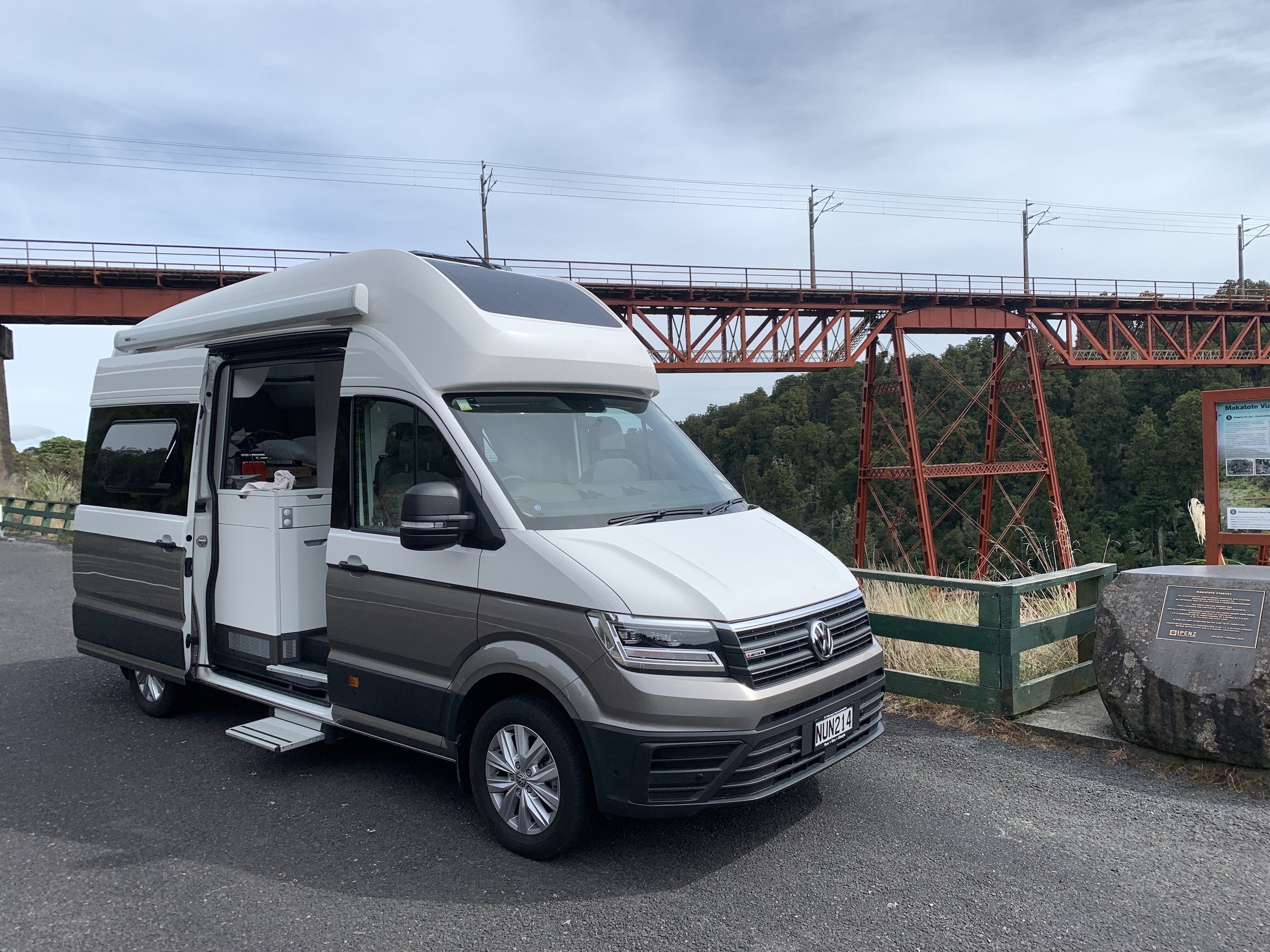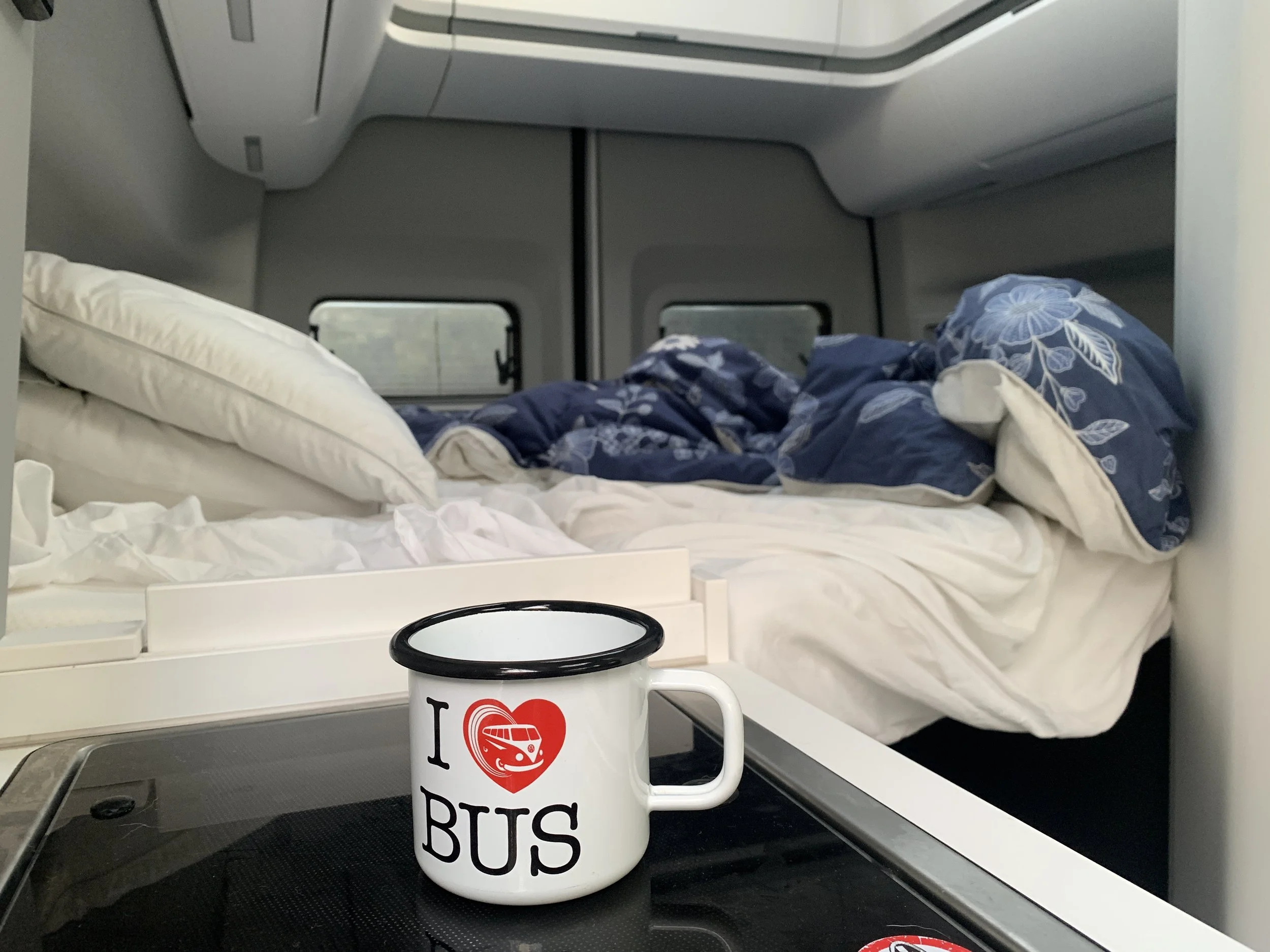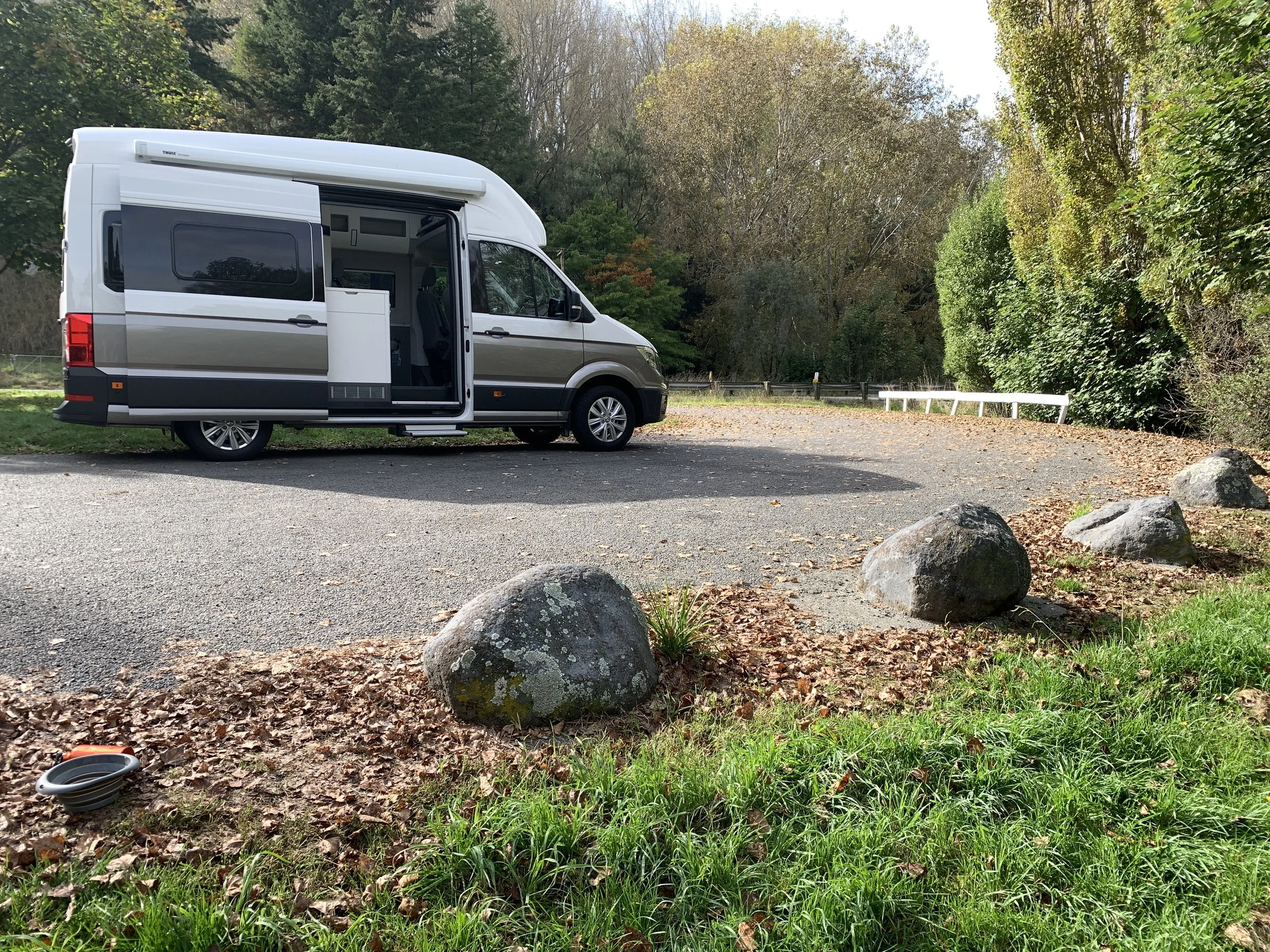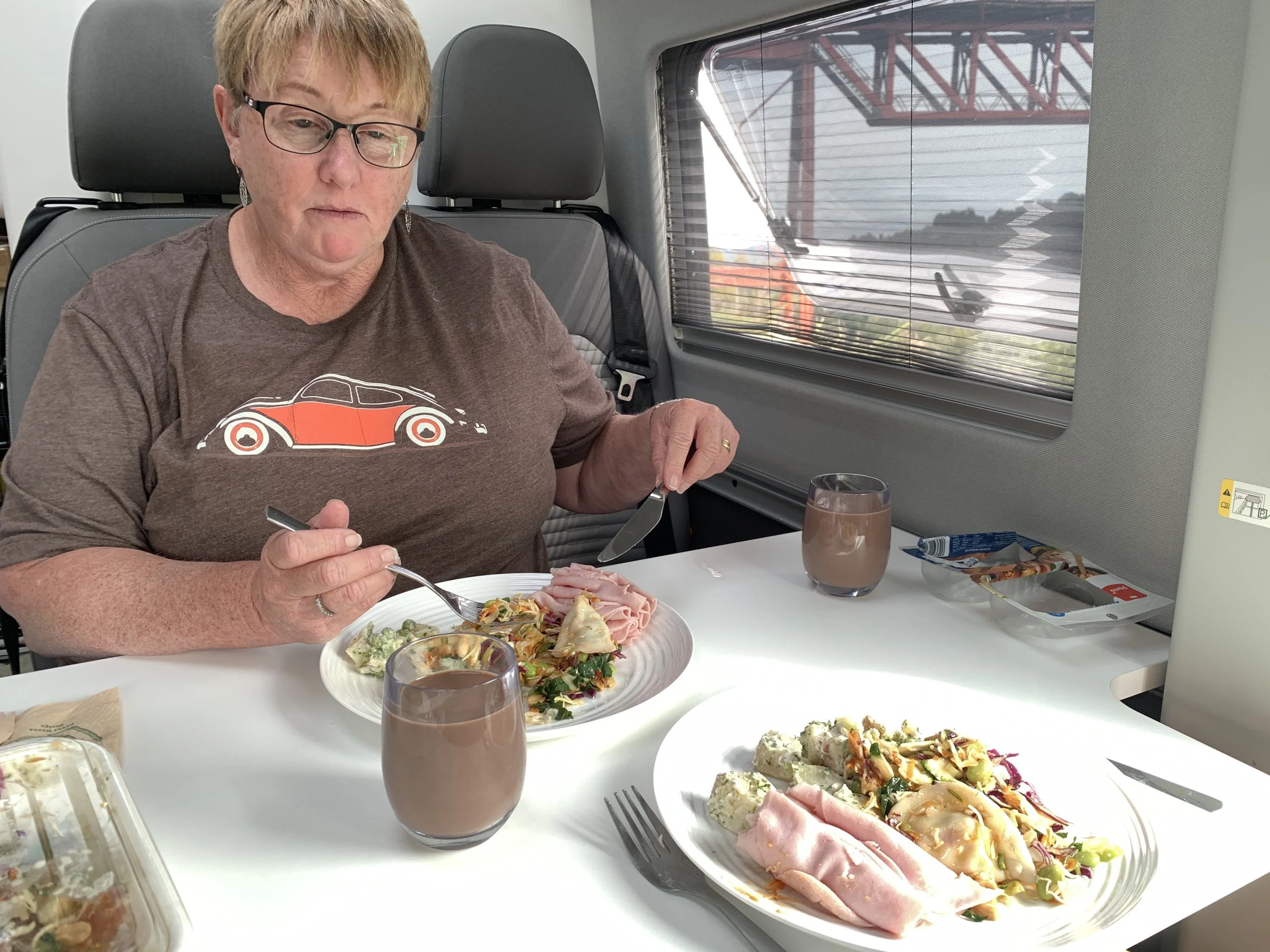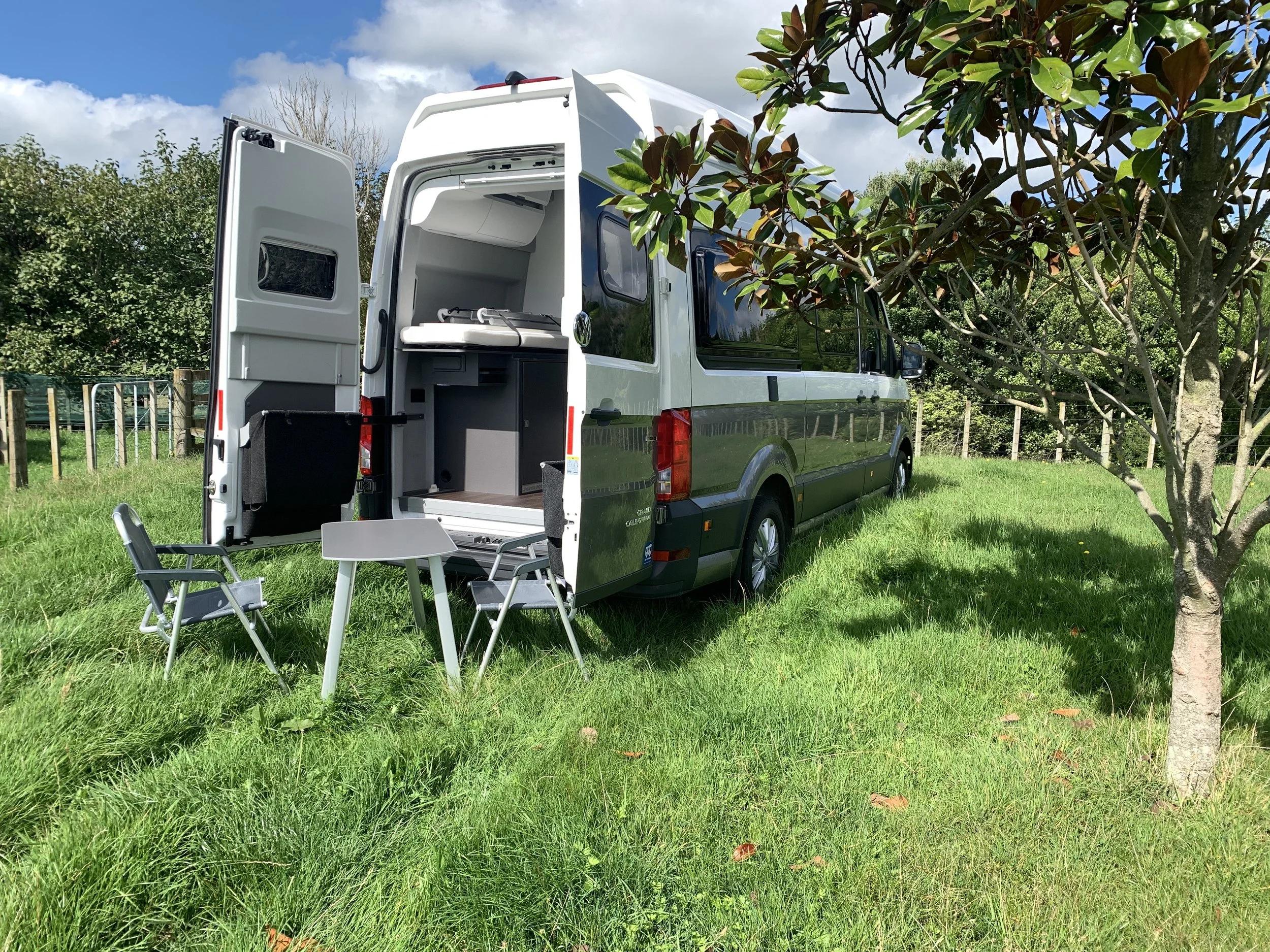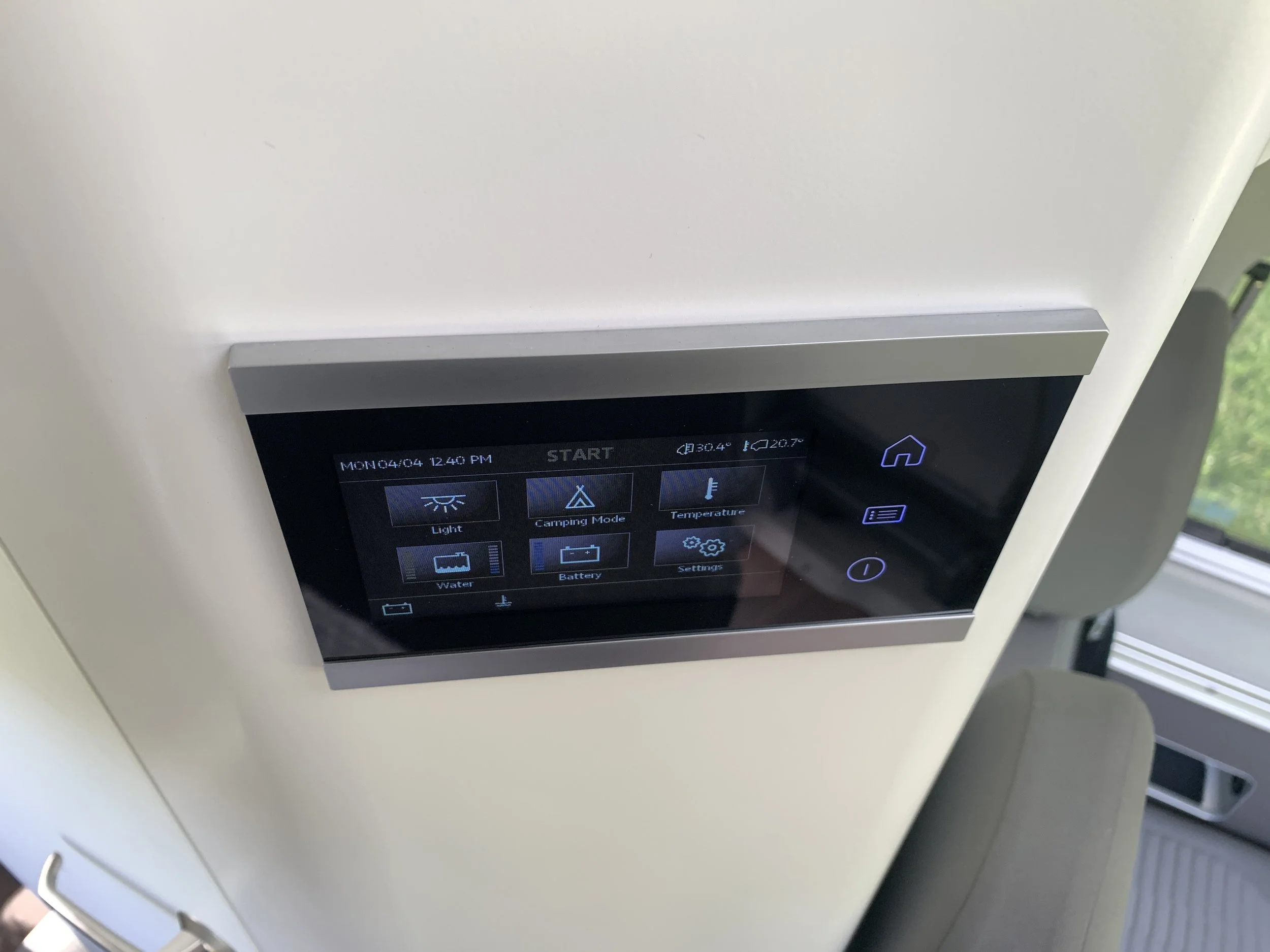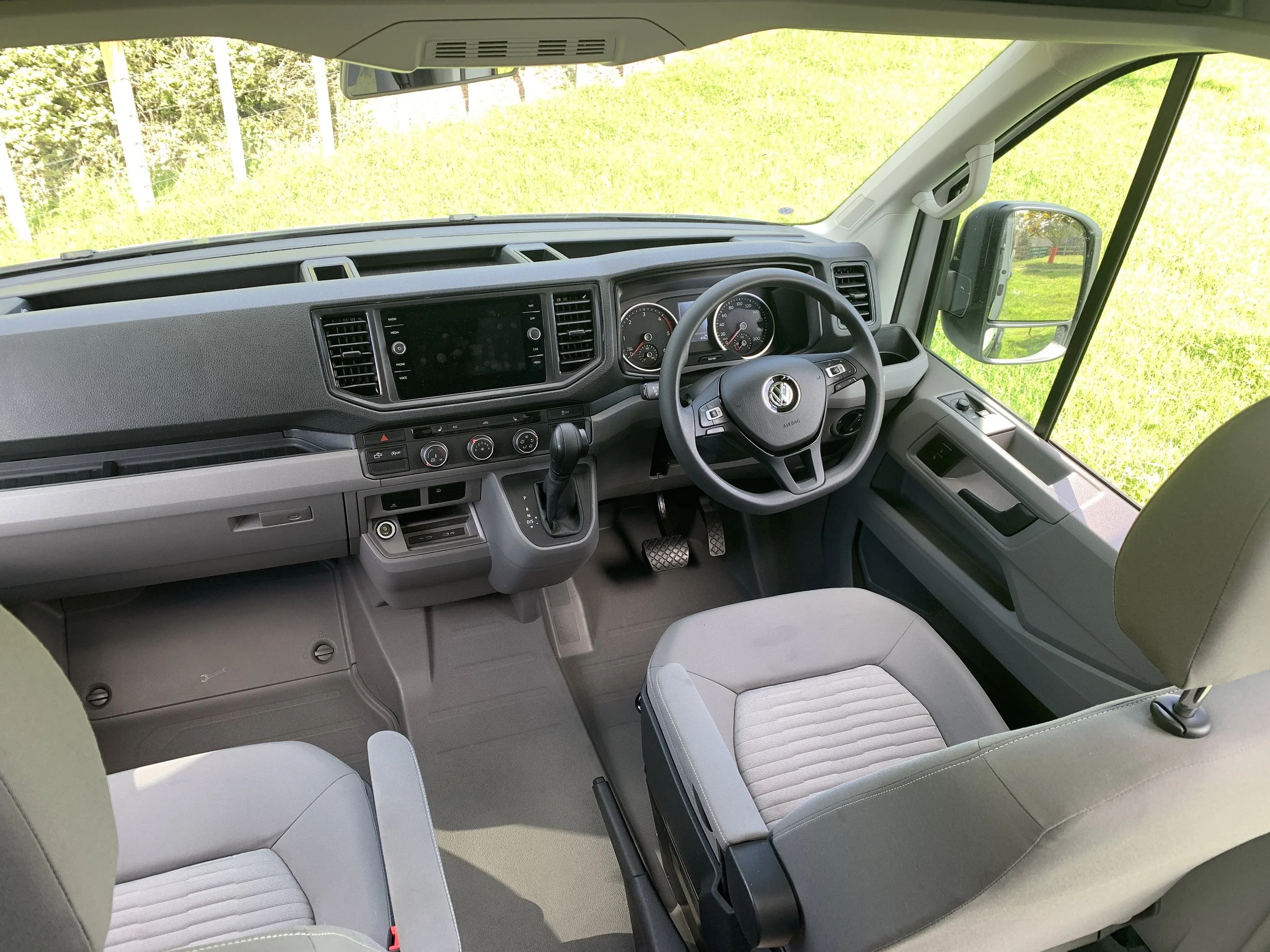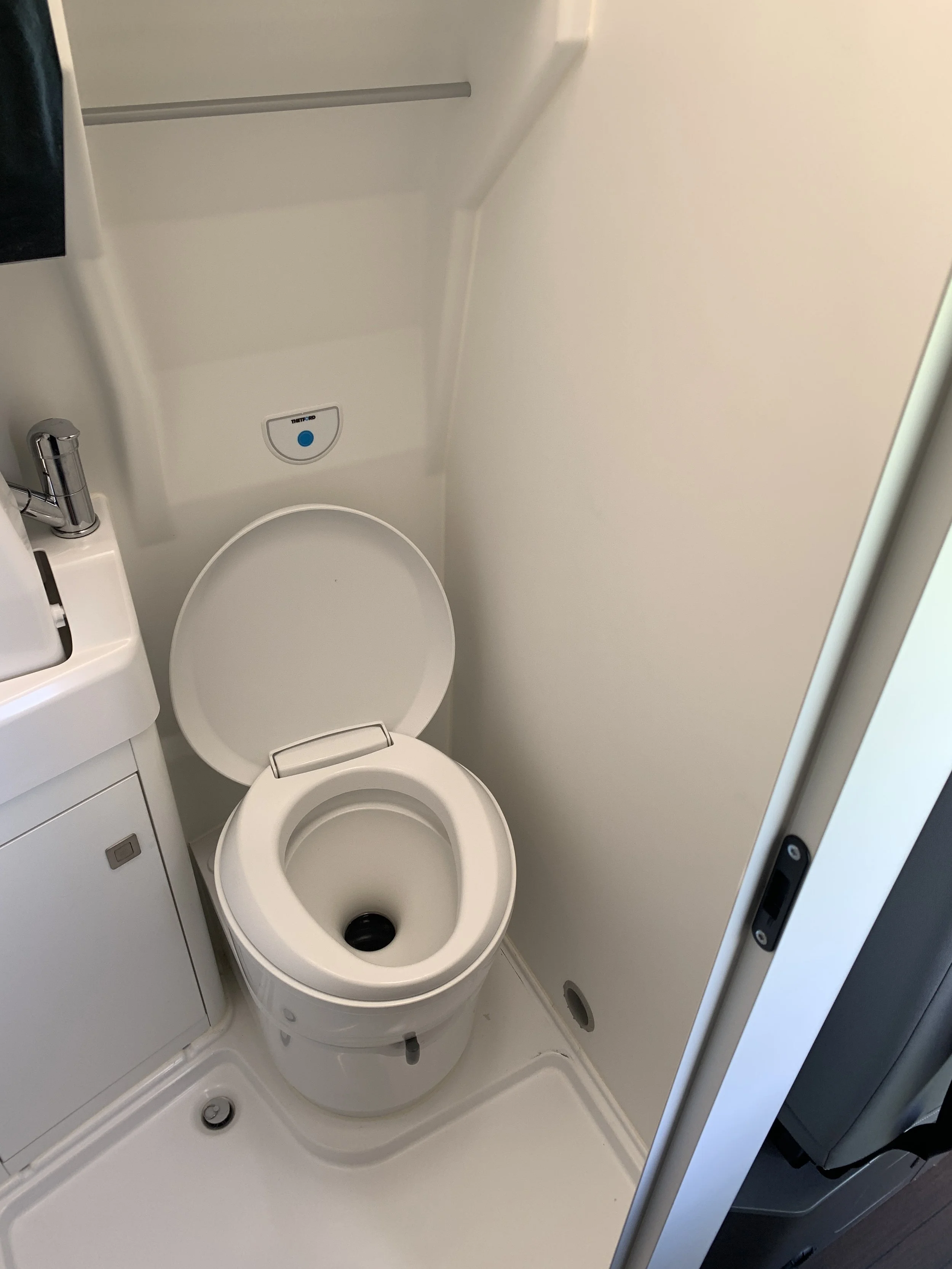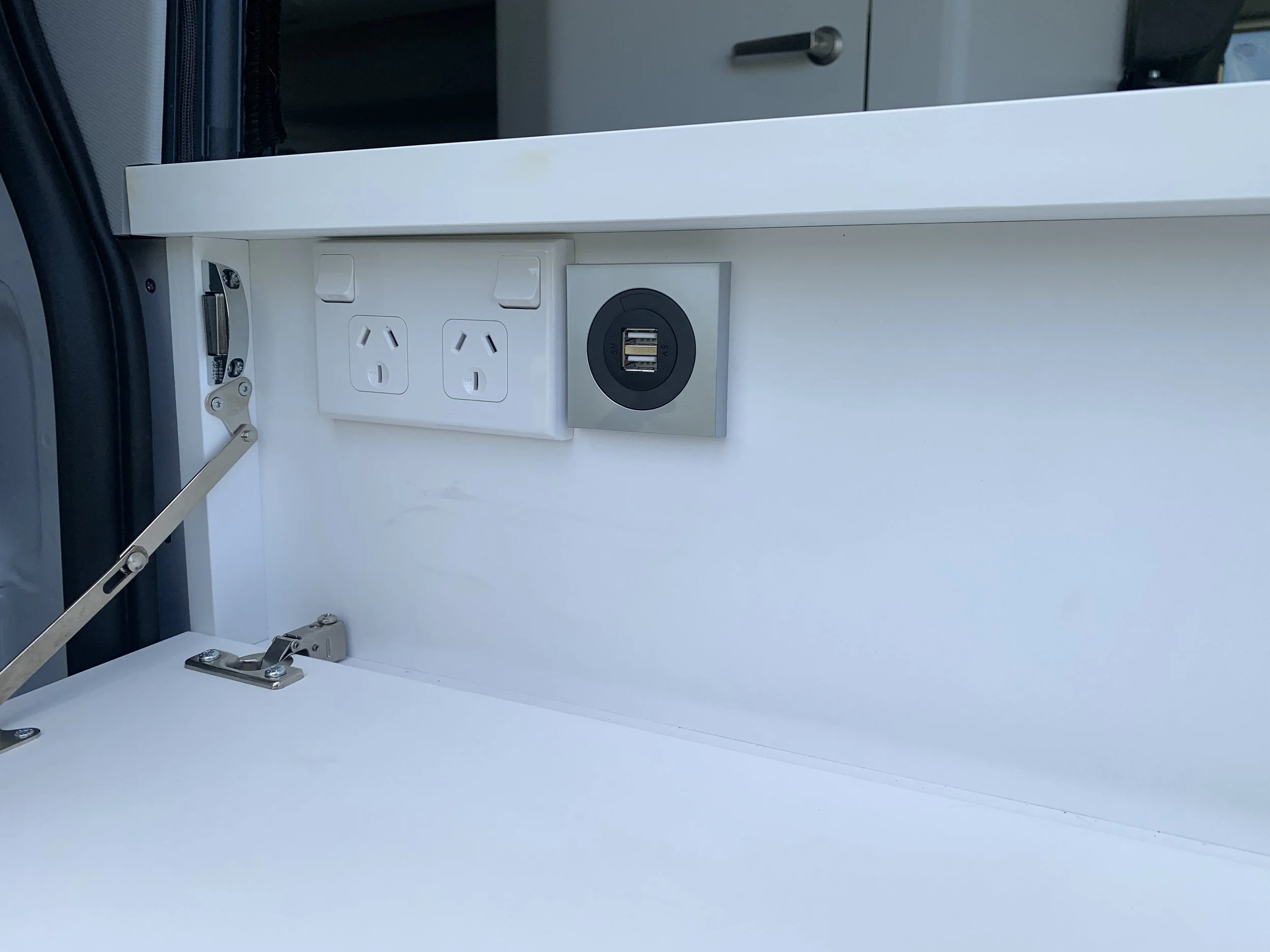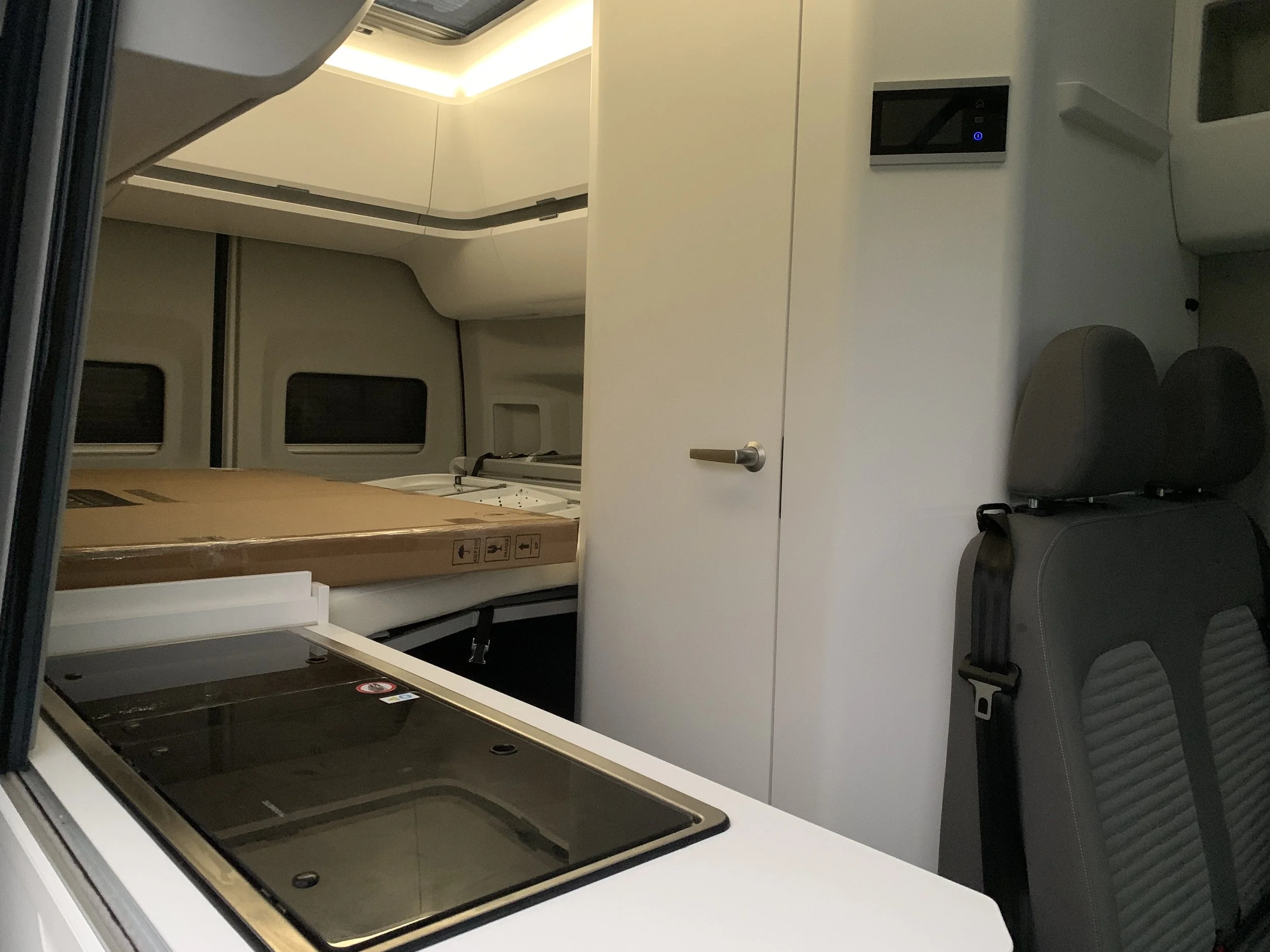Volkswagen Grand California 600 roadtest review: German for ‘happy camper’
/Time to go big with a brand with a long and illustrious heritage when it comes to outdoorsy adventures.
Price: $163,000 (excluding Clean Car).
Powertrain and economy: 1968cc turbodiesel four-cylinder, 130kW/410Nm, 8-speed automatic, AWD, combined economy 9.2L/100km, CO2 247g/km.
Vital statistics: 5986mm long, 2427mm wide, 3094mm high, 5986mm wheelbase, 17-inch alloy wheels.
We like: Fastidious attention to detail, driving mannerism, looks amazing.
We don't like: Commercial level seat and dashboard trim, the handbook.
WELCOME to another episode of Moving Houses. Or, more exactly, a moving house.
This is a road test that, for a change, isn’t just about driving.
I’m quite literally checking out a living space. One that just happens to also be built by a car brand, assembled in a car factory, sold by a car distributor and, despite its mass, proves capable of cruising at 100kmh with no effort.
Welcome to Volkswagen’s Grand California. So much more than the van it officially classifies as, though that’s obviously what it is based upon. The Crafter is a slab-side megalith which plenty of businesses buy for the purpose of shifting all sorts of heavy stuff, from ovens and whiteware to bathroom fare, cupboards and beds.
A Crafter in its tallest, cloud-touching form, Grand California comes with all that stuff built in. Lots of vans get turned into campers, but few van makers bother to do that themselves.
Volkswagen is the exception. Rather than leave the job to a specialist builder, it makes motorhomes on the assembly line and the Grand California is the biggest, in two wheelbases.
The 600 is the one here. It has four berths – that is, sleeping room for two adults and a couple of children – and sits on a six metre wheelbase. There’s an even larger version, the 680 (with, you got it, a 6.8m wheelbase), which costs an extra $4k and sleeps … just two. In that one, the bed is Queen-sized and faces north-south. In the 600, it’s a bit smaller and slots east-west.
Thanks to having a second bedroom on top, the 600 stands tallest. Very tall. As in three metres’. This patently prohibits it fitting in a standard home garage. Or, very likely, any parking building. The height so plays on your mind even pulling into a fuel station will have you wondering about snagging. The route to my house includes a railway line underpass. I knew the vehicle would have no issue with it as the gap is 5.7m. Yet the first time through, I still took it gingerly.
It might be starting to sound like a hassle, but in fact it was truly brilliant to be having a go. Genuinely, I was highly excited about driving this vehicle.
Camping hasn’t been my thing for quite a while, basically since we tented across North America and much of western Europe back in the day, but I’ve always been hugely curious enough about motor-homing. This was a box – in more ways than one - I had to tick.
Lots of other Kiwis feel the same, apparently. The Grand has been a decent seller for Volkswagen, particularly in the period when covid ruined overseas’ travel.
I kind of get it: Life on the road, staying by the roadside in a vehicle purpose-prepped for the job that, when not on an adventure, can be left on your doorstep, just awaiting an owner whim to grab the keys, hit the highway for a special somewhere and no slumming it when you get there. That sounds pretty cool.
Yes, I know full well how the counter-argument goes. There really isn’t anywhere in this country you cannot reach by regular car, and find somewhere to stay. You could presumably spend a long time in even the swankiest most exclusive digs, with all frills included, for the price of this model.
Is that the real point? Probably not. If you’re sold on it, then why not? I’m not sure I am, per se, but I do very much admire the effort Volkswagen puts in.
This was my first time at the wheel, yet I’d crossed the threshold previously, so already had an appreciation of how clever Volkswagen's design team have been.
Which is very clever indeed. Every cubic millimetre of space has been used to its best advantage to create what appears to be proper home away from home. It’s the so-German attention to detail that captivates me.
Some of the features are genuinely high-brow. The living space having central heating and air conditioning was unexpected; that alone would seem to make it pretty civilised for living off-grid. But there’s also the wonderful, LED ambient and main lighting. There are US-B C points all over the show, too, so your devices are never lacking for power. Neither is the vehicle, as in addition to its onboard battery there are cables for mains replenishment.
It’s the kind of vehicle you’d swing by a dealership just to check out for pure interest’s sake. You don’t often find these models in yards awaiting interest. They’ve just too big and too pricey. The one I got to nosey around earlier this year was customer-bound.
Unfortunately, the in-house product specialist who gave me a tour then wasn’t around to provide a more in-depth walkaround with the test car. Cheers coronavirus. A stand-in did his level best to take me through the salient features, but the poor bloke was also trying to run the whole place singlehandedly so it was all a bit rushed. I was fairly confident about the driving. It was the housekeeping that loomed as a new learning experience and I struggled.
Still, how challenging can it be? For me, harder than I’d imagined. There’s a dedicated to the camping stuff and it would match Lord of the Rings for page count.
Before talking about the home-away-from-home experience, a few words about what’s it’s like to get there and back. Basically, those words could render down to “it’s a van and it drives like (a well-laden) one.”
You’d think a 2.0-litre diesel would be a puny choice for a 3.5 tonne slab, yet the engine and eight-speed automatic gearbox aren’t too taxed so long as you drive with consideration to its size and bulk. Sure, step off and straight line pace is regal and it doesn’t take much to get the body moving around, such is the sheer mass, yet it’s no ‘road maggot’. There was no issue holding any open road posted speed limit; even on ascents. I even took it into the overtaking lane a couple of times.
A lot of driver assists help make it less intimidating. Euro and Australasian NCAP have not safety tested the Grand California (or, apparently, the Crafter van) but there is a decent amount of safety tech as standard. This includes automated emergency braking along with the usual electronic stability control systems. It also an assist to lessen the effort to keep going in a straight line in a crosswind. You do tend to allow for plenty of stopping distance and also to watch the surface for imperfections, not least potholes. A decent thwack will get the cupboards and contents rattling.
New Zealand spec occasions 4Motion four-wheel drive (and a locking rear differential as standard); a reassurance when you’re heading onto a rain-soaked campsites but also great for driving on slippery surfaces.
Forward visibility is good because of the raised driving position and big windows, and the door mirrors are big enough to help with any potential blindspots (there’s even a secondary mirror below the main one that allows you to see the kerb). In what I’m told is typical motorhome style, there’s barely any natural view directly backwards. VW not only provisions front and rear parking sensors as standard but also a reversing camera. It’s a must-have on a vehicle this big.
The display for the televised view is the infotainment system screen. This set-up also incorporates Bluetooth, sat-nav, a radio of course and Apple CarPlay/Android Auto integration. It’s not the most modern infotainment VW has but is logical to use and benefits from shortcut buttons for all the major functions.
Hands-free phone operation comes with a quirk. You tether in the phone with its cable, but where to put the handset? There’s an open area above the dashboard that works, but it will slide around. In a modern VW car, you’d have stowage below, likely with a recharging pad. Actually, the Grand California has one of those … but it’s diagonally behind and well away from the driver, in a cubby underneath where the dining room table slots in. Not sure why. It’s certainly take the whole ‘hands free’ side of things very literally.
Our big plan was to head to a camp ground a couple of hundred kays away, in a town where we had friends. We’d catch up, have dinner and a few drinks, then they’d go home and we’d bed down. It didn’t quite work out that way …
Preparing for the drive took a day. As said, the vehicle had been used before and, though it had been cleaned, I figured it prudent to clean all the plates and so on anyway (I did this again before returning the vehicle).
VW NZ Commercials’ invitation to use to this vehicle came with just one caveat. We could “eat, sleep and shower”. but please don’t use the on-board loo, cos … well, it’s a cassette system.
Before heading off, I filled the fresh water tank, which took 15 minutes. With a capacity of 110 litres, turns out this is the biggest single tank aboard, comfortably bigger than for the fuel and, curiously, 20 litres larger than the grey water tank.
There’s a control pad for all the interior functions within the living space. In addition to allowing a user to keep dibs on the fluids (grey water as well as potable), it also gives the status of the leisure battery. That’s the one that is on a separate circuit from the main battery and powers the interior lights, fridge and other systems in the living area. I spent a lot of time looking through the various modes. It’s fantastic. One little concern was a teensy flashing icon. What was all that about?
I got the gas working, but only for the stove top burners. I was flummoxed how to achieve hot water. The handbook exasperated me, so I called up a friend, who knows a lot more about motorhomes. Peter was as confident as I was … to start with. We spent an age going over every possibility. Poking, prodding, turning stuff on an off, checking and cross-checking. Nothing worked.
I suspected a fault. The boiler’s exhaust is directly below the dining room window and, as a safety precaution to guard against the dangers of carbon monoxide, there’s a microswitch that will automatically shut it down if the window is opened, preventing any fumes from getting into the van. Logical. Sensible. But was it faulting? As it turned out, no. VW subsequently checked out everything and found nothing amiss. So, clearly, I’d somehow screwed up, and not only with this. I couldn’t get the power points working, either to operate my portable coffee machine. (Again, these checked out).
Disappointed? Just a bit. You really want the vehicle to work perfectly because it really is perfectly designed. The attention to detail is awesome; you seem to get everything but bedding and bog roll. Open the drawers and there’s a complete set of bespoke plates, pots, a frying pan, cutlery, glasses and cups. My wife, a longtime VW fangirl (check the t-shirt) loved the tin mugs with a caricature of the original VW camper, what we called Kombi (and Germans know as the Bulli) and a ‘I love bus’ message. Brilliant.
We only packed for overnight, which massively under-utilised the storage. It has normal cupboards and drawers to aircraft-style overhead lockers, all with secure locks to prevent items from spilling out while on the move. When tucking in for the night, I tried not to dwell on the biggest stowage area, right under the bed, being where the twin LGP tanks site.
Inside the rear doors are a pair of fold-out camping chairs, and a wee table, for when you want to sit outside. All the windows and skylights in the living area have insect nets and blackout blinds, and if you can faffed fitting them, there are additional covers for the windows up front for extra privacy.
The sliding side door, also with a mosquito net to help prevent you from being bitten, has an auto-retracting step with a memory setting that keeps it out in camping mode, but pulls it in when the vehicle is driving. It’s a pity this opens out on our traffic side – in Germany, it’s obviously on the much safer kerb-side – but I like how they’ve done it.
Halfway through our journey we stopped for lunch; we’d bought salad fixings and drinks. No hot coffee, sadly, but still, pretty cool.
You need not actually need leave the vehicle to go to the dining area, as it’s straight behind the front seats, but to get these to swivel cleanly - to face a bench seat for two (complete with Isofix points and top tethers) - without risk of touching the door cards requires first opening the doors for clearance. Another warning: When transferring back from the cabin to the driver’s seat, DUCK. Else you’ll thwack your head. Only did it three times. Slow learner, right?
Within the space between the facing seats slots a removable and slide-adjustable table. I guess this where you spend your evenings sipping schnapps and playing cards (they provide a pack), chatting or using your iPad/laptop for work or as a media centre (there’s no television in this package, though VW will provide a local area hotspot for $1750). It seems possible the sound from any movie can be Bluetooth linked into the vehicle’s stereo, which you can also have playing regardless.
The kitchenette area is just inside the sliding door and the wet room along the opposite side. Sliding out of the front of the kitchen unit is the 70-litre fridge freezer, well large enough for a couple of days food and liquid refreshments, while the gas cooker and sink are set into the countertop, covered by hinged glass panels. There’s an additional pop-out surface for extra counter space.
The self-contained wet room has two shower drain plugs to cope with an uneven pitch and the shower head doubles as the sink tap.
The 600 has a slide-out bed area above the front seats that we ignored. Not so much because it can only take up to 150kg of weight but more because it’s awkward for anyone other than a child to access and is so close to the ceiling of the van I suspect anyone sized larger would be likely to bump their shoulders when turning over in the night. So, yeah, if you’re an adult person, it’s the big bed in the back you want.
Ultimately the entire point to this was being able to say I slept the night in a campervan. Mission accomplished. Just. I’m 1.2 metres’ in height. That’s no problem for walking around the cabin; there’s headroom to spare. But when you’re recumbent across the van, you wouldn’t want to be any taller. When I yawned, my head brushed the wall. That’s how close it was for me.
Comfy? VW provides a pretty thin mattress to save on space when folded away. It’s not too bad … for one night. Though there were no aches and pains, I’d be getting a topper pad of some kind for longer. But, overall, I slept pretty well. Having some windows and the sunroof above my head open kept the cabin fresh; the soft lighting is restful. A shame a neighbourhood dog’s early morning howls of mournful sufferance for being left chained up outside by an idiot owner ruined the tranquillity for a while.
The biggest challenge is getting in and out of the bed, mainly because there’s just one access route, from within the cabin, but mostly because it is set so high up. Even for someone my height, it’s an awkward climb. Video tutorials I watched suggested VW provisions a small foot stool to ease this. I suspect that’d been swiped by a previous user. Sleepwalkers beware.
Anyway, as said, the idea was to hit a camping ground, plug the vehicle in and set it up fully. For a multitude of reasons, that didn’t happen and we instead camped out on my mates’ front lawn. ‘We’ meaning me. I alone overnighted in the van. Mrs B ultimately took the soft option of the spare bedroom. We met for breakfast in the house. Where there was a hot shower … and great coffee.
So now that I have, the big question: Would I, could I, do so again?
Actually, yes. But with caveats. As a person who shops for larger sizes, I’d likely go into the 680. As big as it is, the 600 just ultimately seemed a bit too cosy. Plus, sleeping with my feet pointing into the cabin, rather than across it, would likely feel more natural. And, yes, I’d also want to ensure everything was working perfectly next time.
As this was my first campervan experience, I cannot say how well it stacks up with other kinds. Some friends who do this sort of stuff point out that there are cheaper options. From my point of view, it’s not just about vehicle cost, but vehicle type and vehicle quality. The sheer Volkswagen-ness surely counts for something if embracing this experience.

